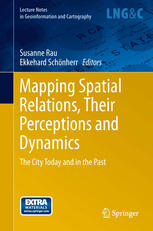

Most ebook files are in PDF format, so you can easily read them using various software such as Foxit Reader or directly on the Google Chrome browser.
Some ebook files are released by publishers in other formats such as .awz, .mobi, .epub, .fb2, etc. You may need to install specific software to read these formats on mobile/PC, such as Calibre.
Please read the tutorial at this link: https://ebookbell.com/faq
We offer FREE conversion to the popular formats you request; however, this may take some time. Therefore, right after payment, please email us, and we will try to provide the service as quickly as possible.
For some exceptional file formats or broken links (if any), please refrain from opening any disputes. Instead, email us first, and we will try to assist within a maximum of 6 hours.
EbookBell Team

0.0
0 reviewsThis book is the product of an eponymous workshop, which took place in Erfurt in May, 2012, and which has since then been supplemented with four further contributions. The topics focus on the potential mapping of perceived urban space and spatial hierarchies as a consequence of social usage (undertaken by a variety of active participants) together with spatio-temporal changes as a result of factors such as demographic urban growth and decline. Historians, cartographers and geographers are brought together to present and discuss different models, ideas and new methods of spatial analysis and modes of representing changes in perceptions. The two main subjects are: the epistemology of spatial change and the question of (historical) media and adequate presentation. This work represents a first step toward the development of a new model for mapping urban changes and spatial relations concerning the past, present and future.